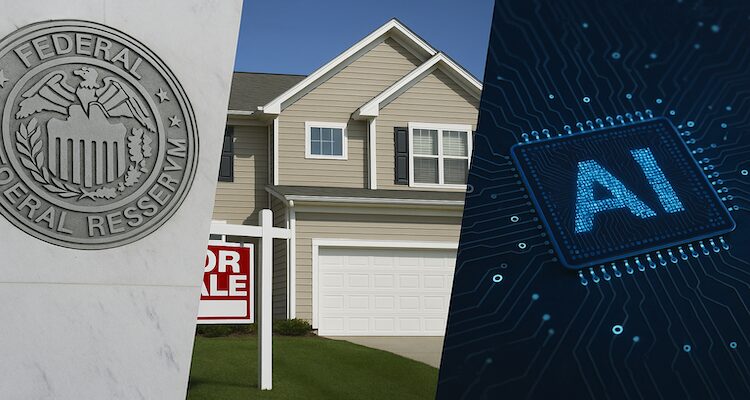Fed Faces Crossroads: Housing Struggles vs. AI Boom
The Federal Reserve is caught between a weakening housing market and surging AI-driven investment. Can it balance growth without fueling inflation?
Introduction: A Balancing Act With High Stakes
The Federal Reserve finds itself in an unenviable position. Inflation is still above its 2% target, job market signals are mixed, and political pressure is mounting. Yet, the central bank’s biggest dilemma may not be about jobs or inflation at all it’s about choosing between rescuing a faltering housing market or containing an unprecedented tech-driven investment surge.
Context & Background: Inflation Goals Under Strain
Despite aggressive rate hikes, inflation remains stubbornly elevated. Neither financial markets nor household surveys show confidence that the Fed will hit its 2% benchmark anytime soon. Rising tariffs are expected to further complicate the picture.
Meanwhile, labor market readings are muddled. Jobless claims remain modest, layoffs are limited, and unemployment is historically low. But this strength may be masking structural problems, including a reduced immigrant workforce and persistent labor shortages.
Under normal circumstances, these conditions wouldn’t justify slashing interest rates. But today’s economy is being pulled in two very different directions: a housing sector in distress and a tech industry experiencing explosive growth.
Main Developments: Housing Weakness Meets Tech Euphoria
The divergence is stark. On one hand, U.S. housing is showing troubling signs:
-
Homebuilder sentiment has fallen to its lowest in more than two and a half years.
-
One-third of builders are slashing prices, while two-thirds are offering incentives to offset mortgage rates that remain uncomfortably high.
-
New housing permits, a forward-looking indicator, just hit a five-year low.
At the same time, the AI revolution is rewriting capital expenditure patterns. Data centers and infrastructure tied to artificial intelligence are soaking up hundreds of billions in investment, with trillions more pledged.
The Fed’s policy options are boxed in. Cutting rates to support housing risks overheating AI-driven spending, worsening inflation. But keeping rates high to restrain tech capital flows could further crush the housing market, which makes up over 10% of GDP.
Expert Insight: Competing Real Estate Realities
One of the most pressing issues in housing is what analysts call “homeowner lock-in.” The ultra-low mortgage rates of the past decade have created a standoff: homeowners with cheap loans are unwilling to sell because any move would force them into far higher financing. As a result, existing homes are scarcer, and the median price of resales has now surpassed that of new homes something never seen before.
Jason Thomas, head of global research at Carlyle, argues the Fed cannot ignore the other side of the real estate equation: AI-driven construction. With federal deficits projected above 6% of GDP over the next three years, Thomas warns that lower rates could overstimulate both public spending and tech capital flows.
“The question isn’t whether high rates are squeezing housing. They clearly are,” he explained. “The question is how much of that squeeze is necessary to restore price stability.”
Thomas further cautioned that if inflation is proving unmanageable with housing already suppressed, rate cuts that reignite the sector could make the target even harder to hit.
Impact & Implications: Risks of Acting Too Soon
The Fed’s challenge is that monetary policy works with a lag today’s decisions may not show their full impact for a year or more. Several scenarios could unfold:
-
Housing could weaken further, leading to rising unemployment.
-
Higher tariffs may force households to tighten spending.
-
The AI investment boom could cool on its own.
But any move to cut rates now would rely more on hope than evidence. Bond markets and inflation expectations could react harshly to premature easing, eroding the Fed’s credibility.
Conclusion: A High-Stakes Gamble
The Federal Reserve is navigating an economy split in two one half gasping for relief, the other racing ahead at breakneck speed. Supporting housing could supercharge the tech frenzy; restraining tech could deepen the housing slump. For policymakers, the cost of miscalculation is enormous.
As the Fed weighs its next move, one thing is clear: whatever path it chooses will reshape not just housing and technology, but the entire U.S. economy in the years ahead.
(Disclaimer: This article is based on economic data and expert commentary available at the time of writing. It is intended for informational purposes only and should not be construed as financial advice.)











